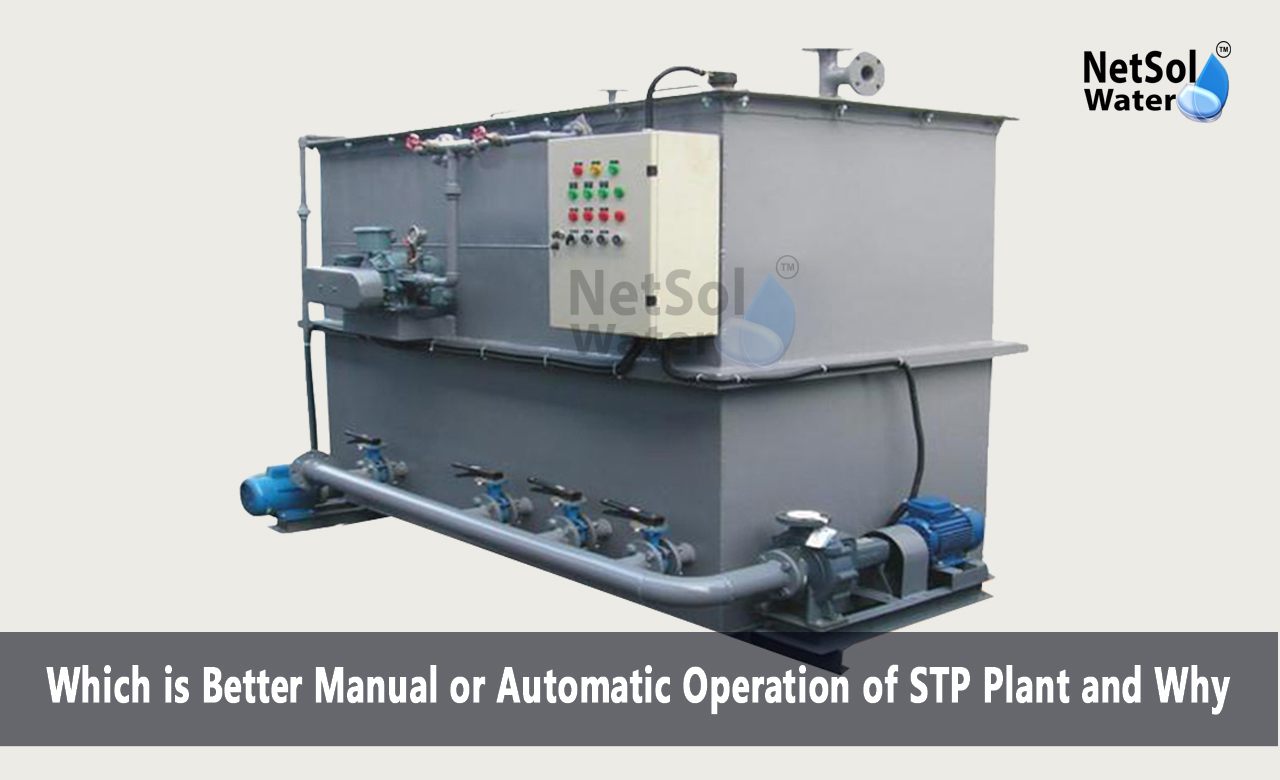Which is Better Manual or Automatic Operation of STP Plant and Why?
Sewage Treatment Plant (STP) operations present an essential decision for facility managers. The choice between manual or automated operations impacts treatment efficiency along with long-term sustainability. Modern STP plants serve as essential infrastructure that processes wastewater through various treatment stages to produce clean water suitable for discharge or reuse. This decision influences operational costs, workforce requirements, maintenance schedules and overall plant performance. Plant managers need to understand both approaches to make informed decisions that match their specific requirements. The advancement of technology has transformed how STP plants function yet manual operations continue to offer distinct advantages in certain scenarios.
Manual STP Plant Operations
Manual operations in STP plants require skilled operators to control and monitor treatment processes. Let us examine how manual operations work in different aspects of sewage treatment.
Process Control: Human operators adjust parameters based on visual inspections and regular testing. They monitor water quality indicators throughout the treatment stages. Operators make real-time decisions about chemical dosing, aeration rates and sludge removal. This hands-on approach allows immediate response to changing conditions.
Maintenance Management: Plant technicians perform daily equipment checks and cleaning routines. They identify potential issues through physical inspection and equipment sound monitoring. Regular maintenance schedules help prevent major breakdowns. The direct interaction with equipment promotes better understanding of system behaviour.
Training Requirements: Operators need extensive knowledge of wastewater treatment principles. New staff members undergo thorough training programs to understand plant operations. Experienced operators pass down practical knowledge to maintain operational continuity. The learning curve involves both theoretical understanding and practical experience.
Exploring Automated STP Plant Operations
Automation transforms how STP plants handle wastewater treatment processes. Let us explore the key aspects of automated operations in modern treatment facilities.
Digital Control Systems: Advanced sensors monitor water parameters continuously. Programmed algorithms adjust treatment processes automatically. The control system maintains optimal conditions without manual intervention. Real-time data collection enables precise process management.
Remote Monitoring: Operators access plant data through control room interfaces. Mobile applications provide alerts about system status. Engineers analyze performance trends through detailed reports. The system enables quick response to operational issues from any location.
System Integration: Different treatment stages communicate through integrated networks. The automation system coordinates multiple processes simultaneously. Equipment status updates flow between connected systems. This integration creates smooth operation across the entire plant.
Comparing Operational Effectiveness
The choice between manual and automated STP plant operations affects various aspects of plant performance. Let us analyze these differences to understand their impact.
Cost Considerations: Initial setup costs differ significantly between approaches. Manual operations require more staff but less technical infrastructure. Automated systems need higher upfront investment but lower ongoing labour costs. The total cost depends on plant size and operational requirements.
Performance Consistency: Manual operations show variation based on operator expertise. Automated systems maintain consistent treatment parameters. Weather changes affect both approaches differently. Each method handles emergency situations through different mechanisms.
Future Adaptability: Manual operations adapt through operator training programs. Automated systems upgrade through software and sensor improvements. Both approaches evolve to meet changing environmental standards. The choice impacts long-term plant development possibilities.
Conclusion:
The decision between manual and automated STP plant operations depends on specific facility requirements. Each approach offers unique advantages that suit different operational contexts. Consider factors like budget constraints, technical expertise requirements and long-term goals when choosing between manual and automated operations.
Ready to optimize your STP plant operations? Contact our team of experts today. We will help you evaluate your facility needs and determine the best operational approach.
Contact Netsol Water at:
Phone: +91-965-060-8473, Email: enquiry@netsolwater.com



